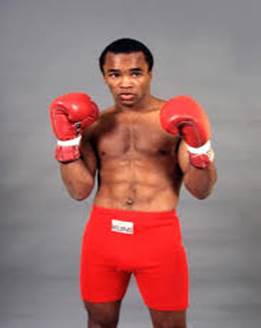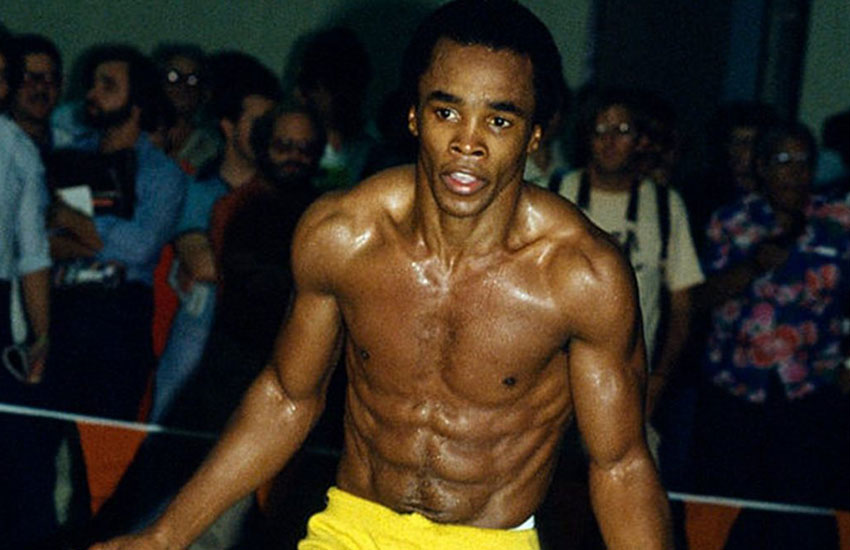Sugar Ray Leonard is not merely a retired pugilist; he is an enduring icon, a brand, and a masterful architect of his own destiny. With a net worth estimated at $120 million, he stands as a financial titan in a sport often marred by tales of economic ruin. His story is a complex tapestry woven with threads of unparalleled athletic genius, breathtaking financial acumen, personal turmoil, and a resilient capacity for reinvention. Leonard’s journey from a shy child in Maryland to one of the wealthiest and most celebrated boxers in history is a narrative as compelling and multi-faceted as his legendary fights.

From Humble Beginnings to Olympic Glory
Born Ray Charles Leonard on May 17, 1956, in Wilmington, North Carolina, his early life was not indicative of future global superstardom. The family’s move to Palmer Park, Maryland, placed him in a working-class environment where opportunities were earned, not given. As a youth, Leonard was remarkably introverted; his world consisted of comic books and the company of his dog, a far cry from the roaring crowds that would later define his existence. His foray into boxing was not born of a burning passion but rather as a追随者 (zhuī suí zhě – follower) of his older brother Roger. The gym became an unlikely sanctuary where his shyness melted away, replaced by a focused intensity.
His amateur career was nothing short of spectacular, a prelude to the professional mastery to come. He captured national titles, but his crowning achievement was winning the gold medal in the light welterweight division at the 1976 Montreal Olympics. The moment was immortalized by a tearful Leonard waving to the crowd from the podium, an American flag held aloft. This victory was his ticket out of his modest circumstances. Yet, in a heartbreaking revelation years later in his autobiography, Leonard disclosed that this period was also one of profound darkness, as he was a victim of sexual abuse by an Olympic official and a benefactor. This painful admission added a layer of profound depth to the “golden boy” image, revealing a strength that extended far beyond the ring.
The Professional Ascent: Redefining Boxing Economics
Turning professional was a practical decision, motivated by the need to provide for his young son. However, Leonard, even then, possessed a vision that transcended the norm. He understood that his value was not just in his fists but in his charisma, his smile, and his marketable, crossover appeal.
His early professional fights were a carefully orchestrated build-up, but his true arrival on the world stage came on November 30, 1979, when he faced the brilliant Wilfred Benítez for the WBC Welterweight title. In a dazzling display of skill and determination, Leonard stopped Benítez in the 15th round, claiming his first world championship and a then-astronomical purse of $1 million. This fight announced a new economic reality for the sport’s lower weight classes. Leonard was not just fighting for titles; he was building an empire, one seven-figure payday at a time.
The Fabulous Four and the Era of Mega-Purses
Leonard’s legacy is inextricably linked to his three legendary rivals: Roberto Durán, Thomas “The Hitman” Hearns, and Marvin “The Marvelous” Hagler. Dubbed the “Fabulous Four,” their series of fights in the 1980s represents perhaps the greatest era in boxing history, and Leonard was its financial and athletic epicenter.
- The Brawl in Montreal & The No Más Rematch (vs. Roberto Durán): His first encounter with the savage intensity of Durán in June 1980 ended in a close decision loss. It was a humbling experience, but it set the stage for one of the most infamous moments in sports history. The November rematch, “The No Más Fight,” saw Leonard masterfully alter his style, using his speed and movement to taunt and frustrate Durán. The Panamanian’s shocking surrender in the eighth round, uttering the words “No más” (no more), became the stuff of legend. Financially, these two battles were monumental, with Leonard earning a combined $16 million, a figure that shattered all previous records for the weight class.
- The Showdown (vs. Thomas Hearns): September 1981’s “The Showdown” pitted Leonard’s artistry against Hearns’s terrifying power. It was a dramatic back-and-forth war that culminated in Leonard, behind on the scorecards, summoning a miraculous 14th-round stoppage to unify the welterweight title. The purse of $11 million further cemented his status as boxing’s premier earner.
- The Super Fight (vs. Marvin Hagler): After a five-year retirement due to a detached retina, Leonard engineered what many consider the most brilliant marketing and athletic comeback in sports history. Moving up to challenge the indomitable middleweight king Marvin Hagler in 1987, Leonard was a massive underdog. Using his legendary speed and clever ring generalship, he boxed a masterful fight, stealing rounds with flurries of punches in the final seconds. The controversial split decision victory for Leonard remains debated, but its financial impact is not. Leonard’s guarantee was a historic $11 million, but his shrewd negotiation of a percentage of the closed-circuit television revenue ballooned his final take to an estimated $20-25 million, making it one of the single richest paydays in boxing at the time.
These battles were more than fights; they were global events. Leonard’s ability to command such unprecedented wealth transformed the business of boxing, proving that a fighter’s earning potential was limited only by his ability to capture the public’s imagination.
Beyond the Ring: Business, Endorsements, and Financial Savvy
Leonard’s net worth was not built on purses alone. He was a pioneer in athlete endorsements, his photogenic smile and clean-cut image making him a favorite for major brands. He became a ubiquitous presence in television commercials during the 1980s, lending his credibility to products like 7-Up, Coca-Cola, and Ford, earning millions in fees that often surpassed those of athletes in more mainstream sports. This crossover appeal was a carefully crafted element of his brand, distinguishing him from the often-gritty image of his contemporaries and making him a palatable star for suburban households.
His business acumen extended far beyond endorsement deals. He founded Sugar Ray Leonard Boxing Inc., his own promotional company, seeking to guide the careers of future generations of fighters. While not as dominant as other promotional powerhouses, this venture demonstrated his desire to remain a central figure in the sport’s ecosystem. Furthermore, Leonard successfully transitioned into a motivational speaker, commanding high fees to share his story of triumph, adversity, and resilience with corporate audiences worldwide. His long-standing role as a boxing analyst for networks like ABC, ESPN, and HBO provided not only a steady income but also kept his voice and face relevant in the sporting conversation for decades.
Perhaps the most visible demonstration of his financial success is his real estate portfolio. In 1993, he purchased a breathtaking estate in Pacific Palisades, Los Angeles, for $7 million. This property, a sprawling compound on two acres, became a symbol of his achievements. In a move that exemplifies his business mindset, Leonard listed the property for sale in 2019 with an asking price of $52 million. After several price adjustments in a changing market, it remains listed at nearly $40 million—a testament to both the property’s luxury and Leonard’s patience in waiting for the right return on his investment. This approach to real estate—viewing it as both a luxury asset and a strategic investment—is a key component of his sustained wealth.
Philanthropy and Giving Back
A significant, though less publicized, aspect of Leonard’s life is his philanthropic work. Alongside his wife, Bernadette, he established the Sugar Ray Leonard Foundation. The foundation’s mission is deeply personal, funding research and awareness for pediatric type 1 & type 2 diabetes, a cause close to their hearts. This venture channels his competitive spirit and fame into a force for tangible good, demonstrating a commitment to leveraging his platform for causes beyond himself. It adds a vital dimension to his legacy, showing that his fight extends beyond personal glory to making a impactful difference in the lives of others.
Personal Life: Triumphs and Tribulations
Leonard’s life outside the ropes has been a journey of its own. His first marriage to Juanita Wilkinson, his childhood sweetheart and mother of his two children, ended in a very public and painful divorce in 1990. Court proceedings revealed struggles with alcohol and cocaine abuse, which Leonard has courageously admitted were a misguided attempt to replace the adrenaline rush of boxing. His openness about these battles, much like his revelation about childhood abuse, has humanized him and added to his legacy of resilience. He has spoken extensively about using these experiences as a catalyst for growth, transforming personal pain into a message of hope for others battling addiction.
He found lasting love with Bernadette Robi, whom he married in an extravagant ceremony in 1993. Their stable partnership has been a cornerstone of his post-boxing life. His connection to popular culture was further solidified through his role as the godfather of Khloe Kardashian, leading to occasional appearances on Keeping Up with the Kardashians, which introduced him to a new, younger generation and showcased a different, more relaxed side of his personality.

The Legacy: More Than a Number
extraordinary life. It represents the culmination of:
- Unrivaled Athletic Excellence: A career that yielded world titles in five weight classes and victories over all of his legendary contemporaries.
- Revolutionary Business Mindset: An innate understanding of his market value and the courage to demand it, forever changing the earning potential for fighters.
- Strategic Brand Management: The careful cultivation of a “good guy” image that made him a sought-after pitchman and a beloved figure.
- Financial Prudence: The intelligence to invest, manage, and grow his wealth far beyond his active years, avoiding the financial pitfalls that engulf so many athletes.
- Philanthropic Impact: The dedication to using his wealth and influence to advocate for and fund critical health initiatives.
Sugar Ray Leonard’s story is the American Dream, amplified by the glare of the ring lights. His $120 million fortune is not just money in the bank; it is the dividend paid on a lifetime of brilliance, determination, and an uncanny ability to not only win fights but to win on his own terms, both inside the ring and in the arena of business. He is the quintessential champion who fought for and secured the most valuable title of all: lasting financial and personal prosperity. He transcended the sport to become a global icon, proving that the greatest victories are those that secure a legacy far beyond the final bell.

